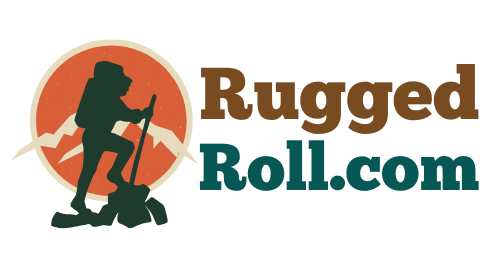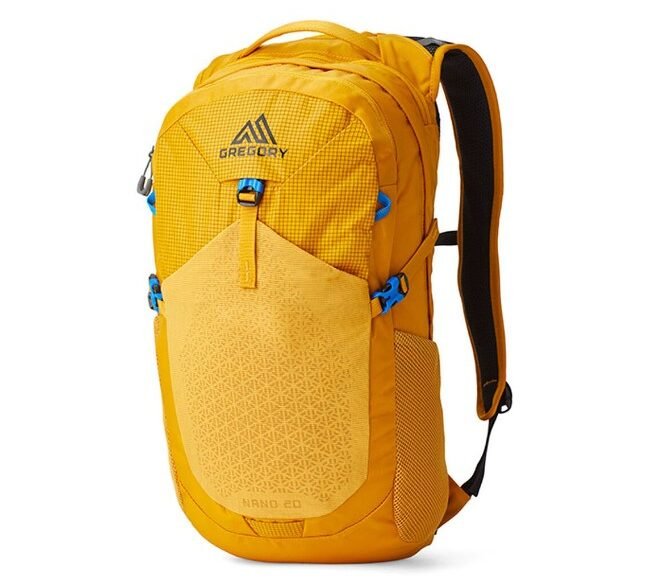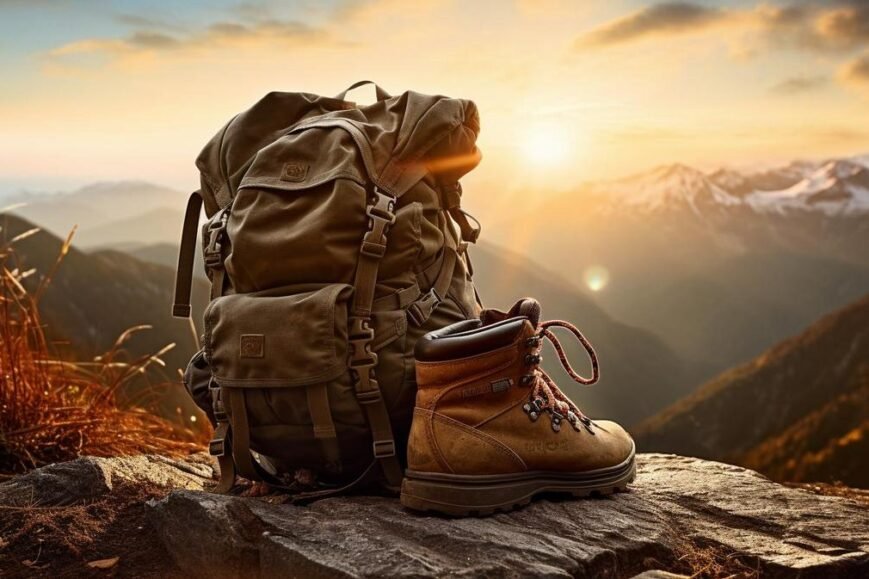Brief Overview
The Gregory Nano 20 is a versatile and innovative hydration pack designed to cater to the needs of active outdoor enthusiasts, from day hikers to trail runners. As part of Gregory’s Nano series, this 20-liter pack offers a blend of hydration, storage capacity, and thoughtful features that set it apart in the competitive hydration pack market.
Combining Gregory’s extensive expertise in backpack design with a focus on hydration integration, the Nano 20 provides users with a reliable and streamlined carrying solution for their adventures, whether they’re tackling rugged trails or navigating the demands of an urban commute. With its unique blend of functionality and style, this pack is poised to become a go-to choice for active individuals seeking a versatile and high-performing hydration system.
Gregory Nano 20
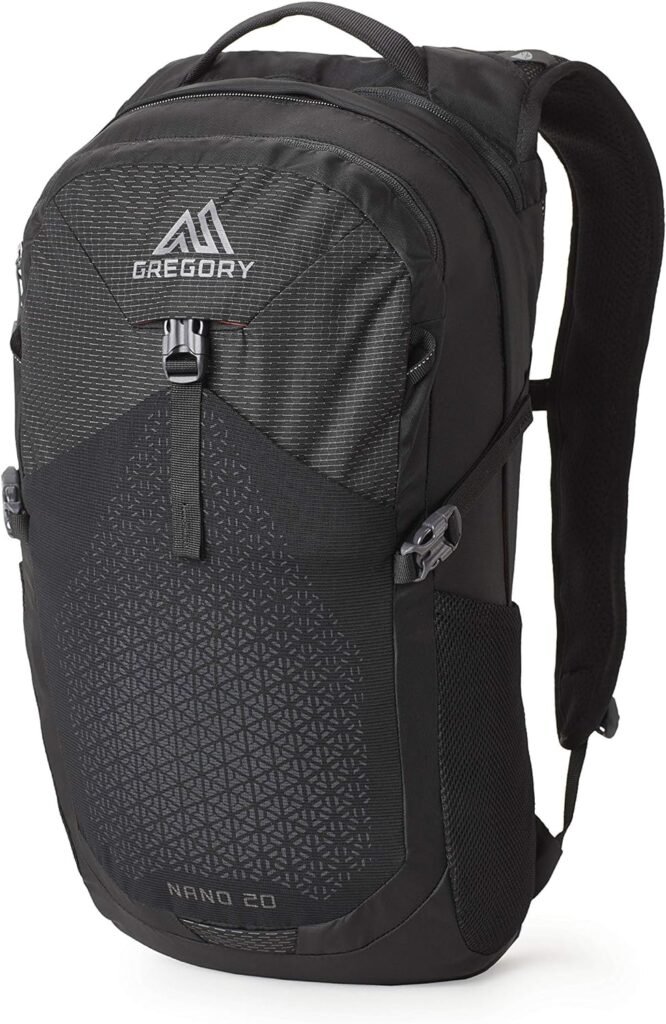
Specifications
- Capacity: 20 liters
- Weight: 1.41 lbs (0.64 kg)
- Dimensions: 19.5 x 10.5 x 7.5 inches (49.5 x 26.7 x 19 cm)
- Material: 210D Honeycomb Cryptorip HD Nylon
- Hydration: Includes a 3-liter hydration reservoir
- Pockets:
- Main compartment with hydration sleeve
- Front zippered pocket with organization panel
- Dual side stretch mesh pockets
- Zippered top pocket for small items
- Intended Use: Day hiking, urban commuting, light travel
First Impressions
Upon first glance, the Gregory Nano 20 exudes a sense of purpose and technical sophistication. The backpack’s sleek, aerodynamic silhouette and subtle color schemes immediately convey a sense of athleticism and performance, hinting at the level of engineering and innovation that has gone into its design.
Unzipping the main compartment reveals a generously sized interior, with ample space for day-to-day essentials, outdoor gear, and the integrated hydration system. The thoughtful organization of the pack’s various pockets and compartments suggests a well-considered approach to maximizing the available storage capacity, ensuring that users can easily access and manage their belongings while on the move.
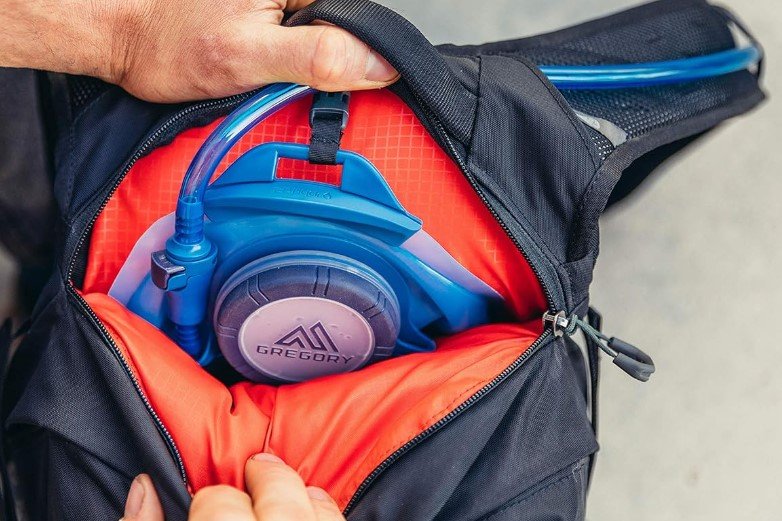
What We Like
One of the standout features of the Gregory Nano 20 is its exceptional hydration performance. The integrated 2-liter reservoir, which is designed to be easily refilled and accessed, provides users with a reliable and convenient source of hydration during their activities, whether they’re traversing rugged terrain or navigating the demands of an urban commute.
The pack’s overall comfort and load-carrying capabilities are also noteworthy. The contoured shoulder straps, padded back panel, and adjustable waist belt work in harmony to distribute the weight of the load evenly, ensuring a secure and supportive fit that minimizes the strain on the user’s body, even during extended periods of wear.
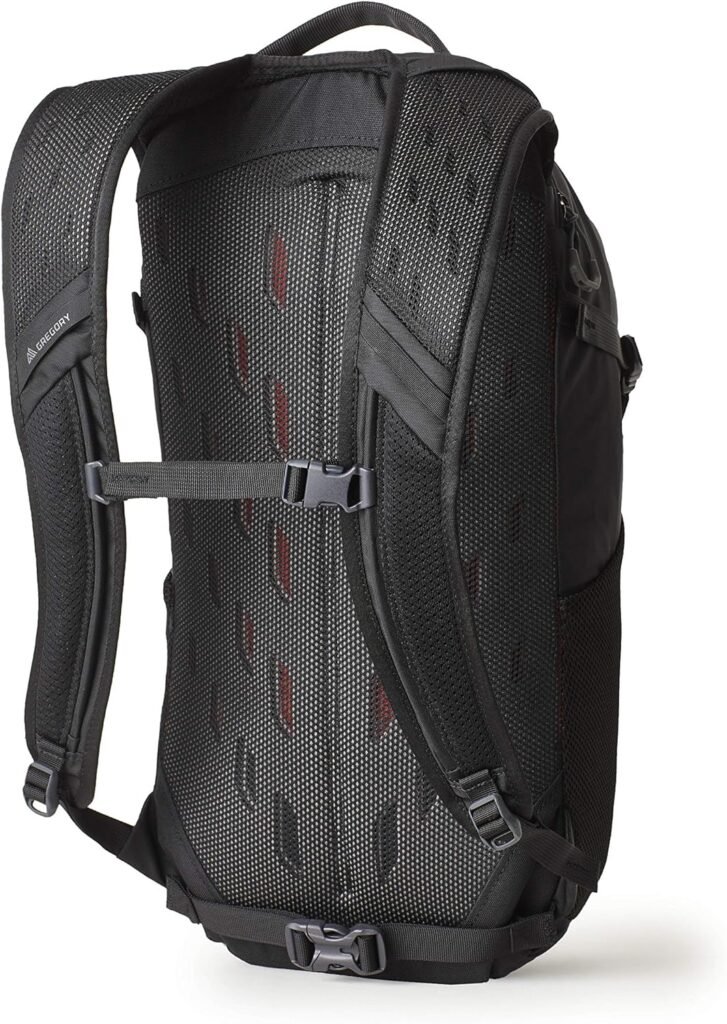
Another aspect that impresses is the Nano 20’s versatility and adaptability. The backpack’s sleek, low-profile design and comprehensive feature set allow it to seamlessly transition between different environments and activities, from trail running and day hikes to cycling and everyday commuting. This level of versatility makes the Nano a compelling choice for those seeking a single, high-performance pack that can handle a wide range of use cases.
What We Don’t
While the Gregory Nano 20 is undoubtedly a premium-quality hydration pack, its relatively high price point may be a deterrent for some consumers, particularly those on a tighter budget or who are new to the outdoor gear market. The backpack’s robust construction, integrated hydration system, and comprehensive feature set come at a premium, and it may not be the most accessible option for those looking to minimize their initial investment in hiking and outdoor gear.
Additionally, the Nano 20’s sleek and streamlined design, while contributing to its versatility, may limit the overall volume and organizational capabilities of the pack compared to some of its more purpose-built competitors. While the backpack’s internal layout is thoughtful and efficient, users with a need for extensive storage or specialized compartmentalization may find that the Nano 20 falls short of their specific requirements.
The Specs
- Capacity: 20 liters
- Weight: 2.1 pounds (0.95 kg)
- Dimensions: 18.9 inches (height) x 10.2 inches (width) x 7.1 inches (depth)
- Hydration Reservoir: Integrated 2-liter reservoir
- Materials: Reinforced nylon fabric, YKK zippers
Key Features
Design
The Gregory Nano 20 features a clean, aerodynamic design that prioritizes both functionality and style. The backpack’s low-profile silhouette and subtle branding contribute to an understated, athletic appearance that allows it to seamlessly transition between outdoor and urban environments.
Fit
The Nano 20 is designed with a focus on comfort and load-carrying performance, boasting contoured shoulder straps, a padded back panel, and an adjustable waist belt. This well-designed fit system helps to distribute the weight of the pack evenly, providing a secure and supportive fit that minimizes strain on the user’s body, even during extended periods of wear.
Materials
The Gregory Nano 20 is constructed using high-quality, durable materials that prioritize long-term reliability and performance. The main body of the pack is crafted from a reinforced nylon fabric, known for its strength and resistance to abrasion, while the use of YKK zippers ensures smooth, reliable operation over the life of the product.
Dimensions
The Nano 20 offers a 20-liter capacity, providing ample space for day-to-day essentials, outdoor gear, and the integrated 2-liter hydration reservoir. The backpack’s dimensions of 18.9 inches in height, 10.2 inches in width, and 7.1 inches in depth strike a balance between storage volume and overall portability, making it a versatile choice for a wide range of activities and environments.
Weight
At just 2.1 pounds (0.95 kg), the Gregory Nano 20 is a relatively lightweight hydration pack, ensuring that users can comfortably carry their gear and hydration without sacrificing the backpack’s overall durability and feature set. This balance between weight savings and robust construction is a hallmark of the brand’s design philosophy.
Convenient Features
The Nano 20 is equipped with a variety of thoughtful features that enhance the user experience and provide convenient access to essential items. These include:
- A dedicated hydration compartment with a quick-release hose
- Multiple exterior pockets for organization
- A padded grab handle for easy carrying when not on the user’s back
Overall Performance
The Gregory Nano 20 delivers a well-rounded performance that caters to the needs of active outdoor enthusiasts and urban dwellers alike. The backpack’s comfortable fit, versatile design, and reliable hydration system ensure that it can handle the demands of day hikes, trail runs, cycling commutes, and everyday carry tasks with equal aplomb.
The Nano 20’s ability to seamlessly transition between different environments and activities is a particular highlight, as it allows users to enjoy the benefits of a high-quality hydration pack without sacrificing its suitability for more urban-centric uses. Whether navigating the trails or navigating the city streets, the Nano remains a capable and trustworthy companion.

Overall Durability
The Gregory Nano 20 is built to withstand the rigors of an active lifestyle, with a focus on long-term reliability and performance. The backpack’s use of reinforced nylon fabrics, rugged hardware, and thoughtful construction techniques ensure that it can reliably handle the wear and tear of regular use, whether it’s enduring the elements on the trail or the daily grind of commuting and everyday carry.
Adjustability
The Nano 20’s well-designed fit system, featuring adjustable shoulder straps and a contoured, padded waist belt, allows users to fine-tune the backpack’s fit to their individual body shape and preferences. This level of adjustability not only enhances comfort but also ensures a secure and stable carry, even when the pack is fully loaded with gear and hydration.

Best Uses
Seasonal Use
The Gregory Nano 20 is a versatile hydration pack that can be enjoyed year-round, making it a suitable companion for a variety of outdoor activities and weather conditions. From spring trail runs and summer day hikes to autumn cycling commutes and winter urban explorations, the Nano 20 remains a reliable and capable choice, adapting to the changing needs of the user and the environment.
Environment
The Nano 20’s combination of durable construction, compact design, and thoughtful features make it an excellent choice for a wide range of environments, both on and off the trail. Whether navigating the backcountry, commuting through the city, or traveling to new destinations, this hydration pack is well-equipped to handle the demands of an active lifestyle, providing users with a versatile and dependable carrying solution.
Comparison to Other Daypacks
When comparing the Gregory Nano 20 to other popular backpacks in the outdoor, travel, and urban commuting markets, it becomes clear that the Nano 20 offers a compelling balance of features, comfort, and versatility that sets it apart from many of its competitors.
Osprey Daylite Plus
One notable comparison is the Osprey Daylite Plus, a similar-sized backpack that also features an integrated hydration system and a focus on user comfort and functionality. While the Daylite Plus may offer a slightly larger overall capacity, the Nano 20‘s more streamlined profile, customizable fit, and innovative design elements give it a distinct advantage for users who value portability, organization, and a seamless hydration experience.
Key Differences:
- Capacity: The Osprey Daylite Plus offers a slightly larger capacity, which may be beneficial for those needing extra storage.
- Profile: The Nano 20 has a more streamlined profile, making it easier to carry in various environments.
- Fit: The Nano 20 features a customizable fit, enhancing comfort during extended use.
CamelBak Arete 22
Another worthy comparison is the CamelBak Arete 22, a backpack that also emphasizes hydration and active use. However, the Nano 20‘s more comprehensive feature set, including its adjustable suspension system, ventilated back panel, and range of organizational pockets, provide a more well-rounded and versatile solution for those seeking a backpack that excels in both hydration and overall functionality.
Key Differences:
- Hydration System: Both packs emphasize hydration, but the Nano 20 offers a more integrated and user-friendly system.
- Suspension System: The Nano features an adjustable suspension system, providing a more customized and comfortable fit.
- Ventilation: The ventilated back panel of the Nano enhances airflow, reducing sweat and increasing comfort during active use.
Deuter Speed Lite 20
The Deuter Speed Lite 20 is another competitor in the market, known for its lightweight design and suitability for fast-paced activities. While the Speed Lite 20 is excellent for outdoor activities, the Nano 20 offers a more versatile design that seamlessly transitions between urban and outdoor settings.
Key Differences:
- Weight: The Speed Lite 20 is lighter, making it ideal for fast-paced activities.
- Versatility: The Nano‘s design allows it to be used in both urban and outdoor environments.
- Hydration Integration: The Gregory Nano features a more integrated hydration system, providing a seamless hydration experience.
Patagonia Nine Trails Pack 18L
The Patagonia Nine Trails Pack 18L is another versatile option, but it does not offer the same level of hydration integration and urban adaptability as the Nano. The Nano 20‘s comprehensive feature set, including its adjustable suspension system and range of organizational pockets, makes it a more well-rounded choice.
Key Differences:
- Hydration Integration: The Nano offers a more integrated hydration system.
- Urban Adaptability: The Nano 20 is designed to transition seamlessly between urban and outdoor settings.
- Feature Set: The Nano provides a more comprehensive range of features, enhancing its overall versatility.
Our Final Thoughts
The Gregory Nano 20 is a standout hydration pack that effortlessly blends functionality, comfort, and versatility, making it a compelling choice for a wide range of active outdoor enthusiasts and urban adventurers. With its robust construction, thoughtful design features, and exceptional hydration performance, the Nano sets a new standard for what can be expected from a premium-quality hydration backpack.
One of the key strengths of the Nano 20 is its ability to seamlessly transition between different environments and activities, allowing users to enjoy the benefits of a high-quality hydration pack without sacrificing its suitability for more urban-centric use cases. Whether navigating the trails or commuting through the city, the Nano 20 remains a capable and reliable companion, providing a comfortable, well-organized, and hydration-focused carrying solution for a wide range of gear and essentials.
While the backpack’s relatively high price point may be a deterrent for some consumers, the Nano 20’s uncompromising quality, feature set, and overall performance make it a worthwhile investment for those who value durability, comfort, and hydration performance in their outdoor gear. The backpack’s thoughtful design and attention to detail instill a sense of confidence in the product’s long-term reliability, ensuring that users can confidently embark on their adventures without the worry of premature wear or failure.
FAQ
Q. What is the capacity of the Gregory Nano 20?
The Gregory Nano 2 has a capacity of 20 liters, providing ample space for day-to-day essentials, outdoor gear, and the integrated 2-liter hydration reservoir.
Q. How much does the Gregory Nano 20 weigh?
The Gregory Nano 20 weighs 2.1 pounds (0.95 kg), making it a relatively lightweight hydration pack that balances weight savings with robust construction.
Q. What materials are used in the construction of the Gregory Nano 20?
The Gregory Nano 20 is constructed using high-quality, durable materials, including reinforced nylon fabric for the main body and YKK zippers for smooth and reliable operation.
Q. Is the Gregory Nano 20 suitable for year-round use?
Yes, the Gregory Nano is a versatile hydration pack that can be enjoyed year-round, making it suitable for a variety of outdoor activities and weather conditions.
Q. What are the key features of the Gregory Nano?
Key features of the Gregory Nano include a clean, aerodynamic design, a comfortable fit system with contoured shoulder straps and a padded back panel, an integrated 2-liter hydration reservoir, multiple exterior pockets for organization, and a padded grab handle for easy carrying.
![]()
